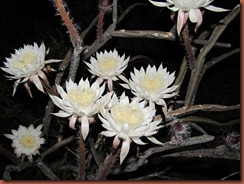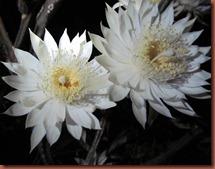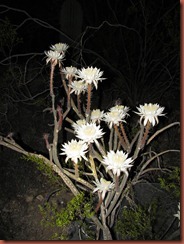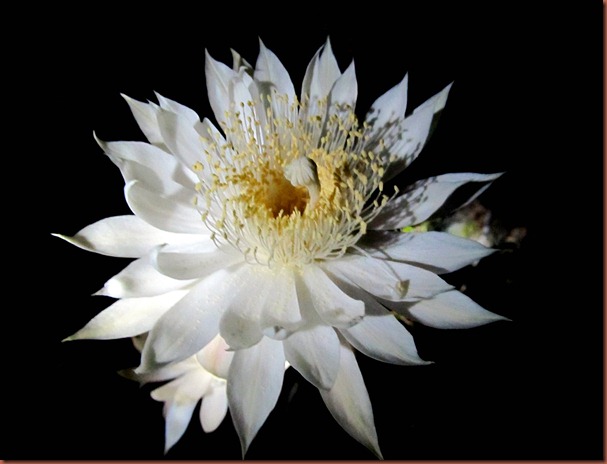
It’s funny what we get excited about. Anywhere else, this flower would probably go unnoticed. It certainly wouldn’t have a party thrown in its honor! But here in the desert, she is crowned Queen and her arrival anticipated for weeks. People come from all over to see her and toast her with champagne.
The desert night-blooming cereus (Peniocereus greggii) is an inconspicuous, spindly cactus that hides beneath and alongside desert ironwood, creosote bush or other desert plants. It grows from a very large underground tuber, which will send out new stems if the old ones are eaten or damaged by frost. We had lived here for several years before we discovered we had one of these rare plants right in our front yard. I had seen something bright red in the desert area beside our driveway, but hadn’t taken the time to investigate. One day my husband asked me what it was, so I went to find out It was a large, ripe fruit and I knew immediately that it was the fruit of the P. greggii. Obviously we had missed the bloom that year, but never again.
The buds begin forming in late spring, starting out as just a fuzzy little nub, and growing over the next few weeks to a length of 4 or 5 inches. Depending on the weather conditions, the buds may ‘stall’ for quite a while, showing little or no growth. Then, for no apparent reason (the rain? the heat?), growth will begin again. On the appointed day, late in the afternoon the bud will begin to slightly unfurl, showing a touch of white beneath the tepals and giving us human watchers our first clue that the bloom is about to happen. Hurry up and arrange the party!
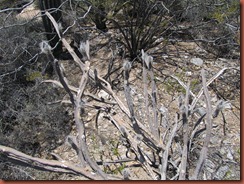
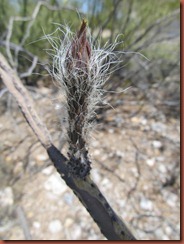
Now here’s the interesting part. All the plants in a given population bloom in synchrony. My plant produces most, if not all, of its flowers on one night, and that is the same night as all the other plants in our area bloom. Tohono Chul, a local desert park, celebrates the bloom night of their many p. greggii specimens with a widely publicized event, drawing hundreds of people from all over the area. And yes, that is exactly the same night that my beautiful Queen puts on her show.
This year we counted 24 buds forming. When the growth burst came, only 15 began to really move, leaving the others behind, perhaps to bloom on a later night. I had been receiving notices from Tohono Chul that their bloom night was imminent. Around 2pm on July 6th, it became evident that the event had arrived. By 6pm, the buds were well on their way, already exuding their intoxicating aroma.
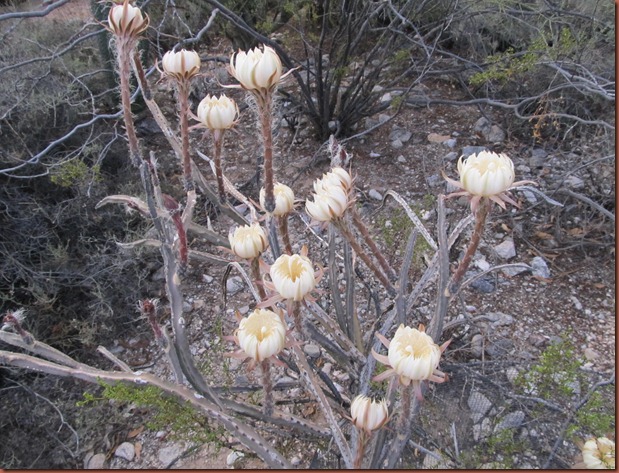
Full bloom arrived by 9pm, by which time it was quite dark, and a flash or other external light needed for photography.
Dark shapes darting about signaled the presence of the flower’s pollinator, a hawk moth. Most likely it is the white-lined sphinx moth, the most common of the hawk moths in our area. Attracted by the luminous white flowers and the powerful aroma, these large moths are able to find the widely distributed flowers during the one night of bloom.
Early the next morning, before the sun’s heat becomes too intense, is the perfect time to absorb the beauty and take a few final photos. For soon Cinderella's rags will return.
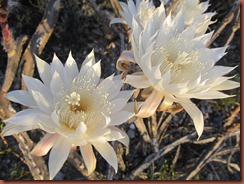
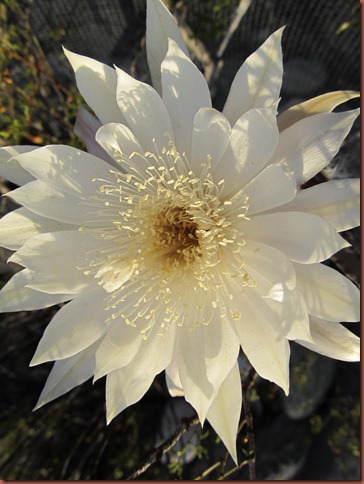
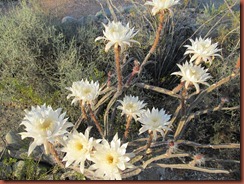
The energy gone, the flowers begin their slow decline. If the pollinator did his duty, soon the fruit will follow, making a fine meal for a ground squirrel who will do his duty by spreading the seeds to perpetuate the species.


Until next year, dear Queen!
